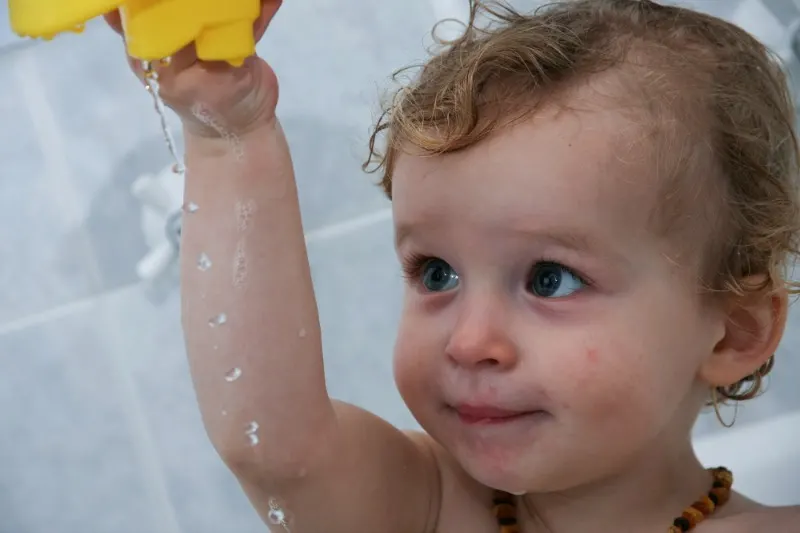This post may contain affiliate links. I only recommend products I use and love. Read the full disclosure here
Last Updated on November 2, 2017 by Alaina
Make sure your child’s shampoo is non-toxic
These days, our bath and cosmetic products frequently contain any number of substances that really aren’t very good for our health. Even things made for children, like mild shampoo or kids bodywash products can have ingredients you should avoid.
To make sure your child’s shampoo is non-toxic, you will have to start reading labels. Unfortunately, there is no single marker or label that will give you the entire picture. Terms like “mild”, “natural” or “green” are all just marketing ideas that don’t have any concrete meaning. You need to actually read the ingredients, and try to avoid some of these toxins:
 Image via Pixabay
Image via Pixabay
Artificial Fragrances
These can be tough to identify because there is no single chemical we can list for you. Overall all, this group of compounds can be disruptive to hormone pathways and some are irritating to delicate skin. Stick with shampoos and body wash that are unscented or that use natural oils for fragrance. Labels will usually say “no artificial fragrances”, so look for that.
Parabens
This group of chemicals is used as preservatives, and is in all kinds of soaps and cosmetics. They have been found to possibly disruptive to the body, and can have toxic effects on numerous systems. Generally referred to as “parabens”, they go by a number of names such as butylparaben, ethylparaben or propylparaben.
Sodium Laureth Sulfate
There are a few slight variations to this chemical name and they all should be avoided in your kid’s bath products. As an ingredient, it is a surfactant that helps the product make lather, foam and bubbles. This is a very likely compound in children’s products because they do love their bubbles. Do your best to avoid it though, even if you have to sacrifice a little extra lather. The problem isn’t so much the compound itself, but that it can produce 1,4-dioxane during manufacture and that has been identified as a carcinogen. On its own, SLS is sometimes an irritant to sensitive skin.
Triclosan
Though you’re more likely to find this in soaps and wipes rather than shampoo, you should be on the look-out for triclosan. It’s the most common chemical used in the “anti-bacterial” range of products that seem to be everywhere these days. It’s possibly a carcinogen, a hormone disruptor and is frankly unnecessary. If you want your child to have a well-developed immune system, they can’t constantly be protected from germs. You need things to be a little dirty.
Mineral Oil
Probably not in shampoo specifically, but mineral oil is still found in a number of lotions and other body products that you should be aware of. It sounds harmless compared to the fancy names of the other chemicals and it’s one that we are generally already familiar with. It comes from distilled petroleum products, and can be harmful to your skin. Like many of the others, it can affect your hormone productions and other possible dangers are being investigated. Petrolatum is similar and should be avoided for the same reasons.
Organic designations are also quite helpful when it comes to avoiding toxins, though it can be hard to find officially labeled organic soaps and shampoos because even non-toxic product lines do have some chemicals in them.
